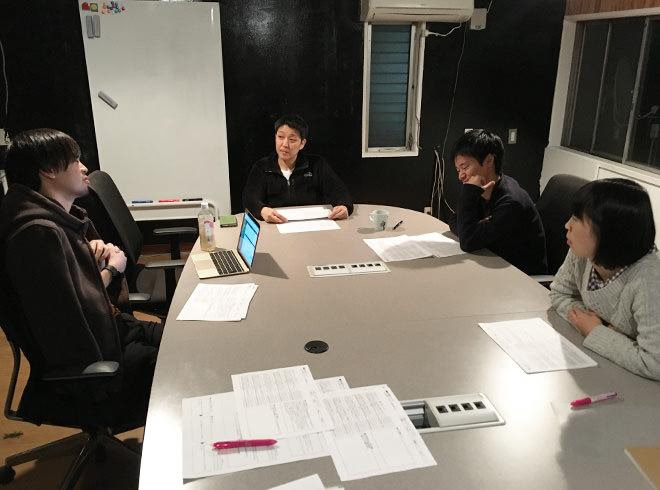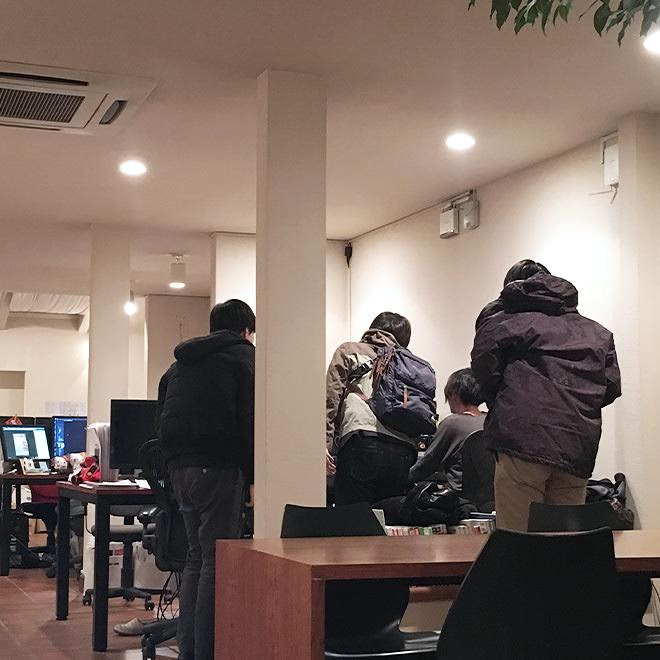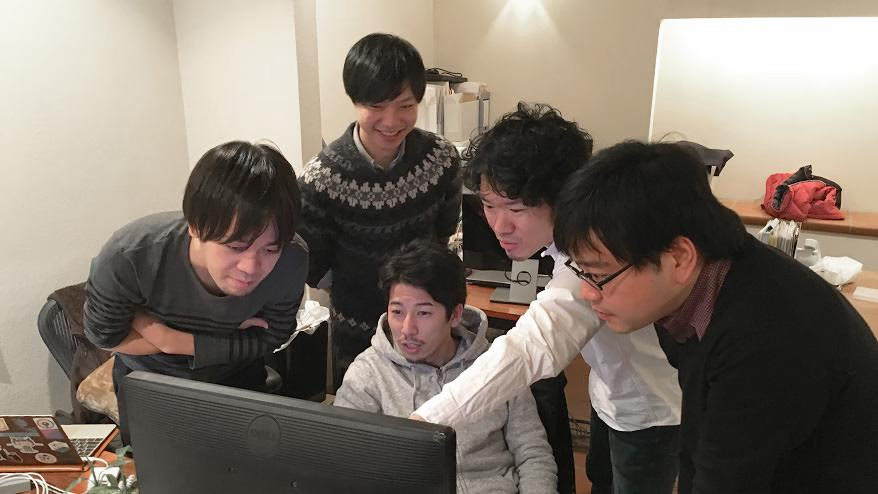こんにちは、コーディングファクトリー部ディレクター/コーダーの田中です。
今回の「コーダーのあーだこーだ」で取り上げたいのは、我がCF部の教育体制について。
「新人教育」とはいっても、人は常に成長するもの。新人と呼ばれなくなっても、コーダーとして技術を磨き続けなければなりません。
コーディングのプロ集団としての、我々の取り組みをご紹介します。
まずは「見る目」を養おう。
チェックチーム研修
コーディングファクトリー(以下、CF)の新人さんがまず受けるのは、2週間の「チェックチーム研修」。
CFのサービスの特徴のひとつでもあるチェック体制。その中に入って、ユーザー目線でのチェックを学びます。
我々の作るページを閲覧するのは、あくまで一般のユーザー。頭ではわかっていても、どうしても忘れてしまいがちなその目線を、最初の時期につかんでもらいます。
また、デザインとコーディングしたページを重ね合わせるチェックにより、業務として、CFコーダーとして求められるクオリティがどんなレベルなのかを、外側から知ることができます。
最初の関門。
CFガイドラインテスト
チェック研修を終えた新人さんには、おのおのシニアコーダーからひとり教育係がつきます。
教育係の指導のもと、新人さんが目指すのは、CFが誇るガイドラインテストに合格すること。
CFのコーダーたるもの、ガイドラインに沿ったコーディングができることが実案件に入る上での最低条件です。
練習用の疑似サイトデザイン一式と、JS等の仕様書がセットになった「テストコーディング」と呼ばれる、実際にコーディングして学べるオリジナル教材を使って、何度も何度も組みなおしながら勉強の日々。
1~2か月の時間をかけて、しっかりガイドラインを叩き込みます。
またこの期間は、教育係の先輩にとっても、コードレビューや質疑応答を繰り返す中で、自分自身が成長できる機会でもあります。

テストコーディング(デザイン)の一部。以前はPC版のみでしたが、最近はRWD版もあります。
ガイドラインテストは、実技試験と筆記試験に分けて行われます。
まずは筆記試験。CFガイドラインの穴埋めテストです。出題個所はなんと130箇所!しかもそのすべてを正解しなければ、つまり満点でなければ合格できません。
次に行われる実技試験では、ページ仕様書とデザインを渡され、それをコーディングします。
実技試験は減点方式。9個の課題が用意され、マイナス11点までが合格ラインです。
採点基準は、第一にデザインの再現性。画像やモジュールが1pxずれているだけでも、減点です。次に指定された仕様の再現性。仕様書にある通りにJSなど実装できているか。
そして、CFガイドラインに準拠したコーディングができているか。クラス命名ルールなどはもちろんのこと、インデントルールなど細かいところも守れていることが大事です。
この厳しい基準をクリアした新人さんは、次のステップに進みます。
半年後の自分をイメージして
6か月教育プログラム
テスト合格後はいよいよ案件デビュー。
実は、教育もここからが本格スタートなんです。
ここから使用されるのは、コーダー・松原謹製の「6か月教育プログラム」。
新人さんのめざす「理想の将来像」をヒアリングし、そこへ向かうためには半年後にどうなっているべきか?から逆算して、習得事項や毎月の目標を定め、「育成計画シート」に記載して教育係とともにゴールを目指します。
このプログラムのポイントは、「振り返りシート」という、教育係自身の自己採点コーナーがあるところ。
自分は教育係としてちゃんと新人さんと向き合えていたか、その月を振り返ることができます。
月 1 開催、新人教育委員会
教育係たちが月に一度集まる「新人教育委員会」では、6か月プログラムの「振り返りシート」「育成計画シート」を持ち寄って、教育の進捗報告や、どう指導すればいいのか?などのお悩み相談など、約2時間をかけて話し合います。

どうすればモチベーションUPしてくれるか?どういう案件が適しているのか?何にチャレンジしてほしいのか…。考えること、話し合うことは尽きません。
「最近、あの人頑張ってるよね」「元気なさそうだけど、大丈夫?」…。
皆で話し合うことで、1対1では拾いきれない、新人さんの細かなサインを汲み取れたり。
自分の担当している人のことだけではなく、委員全員で新人メンバー全員のことを考えることができます。
また、自分一人で抱えがちな教育上の迷いも、人の意見を取り入れることで解消することができます。
半年たっても、1年たっても。
半年間のプログラムが終われば、ついに一人前のコーダーとしての独り立ちです。
とはいえ、我々Web技術者にとって「これで勉強終わり!」なんてラインはありません。
毎日のように現れる新技術、昨日まで盛り上がっていた話題でも、今日「もうそれ、古いよ」と言われてもおかしくない世界。
CF部では「esa.io」を使って自らの技術のストックを共有したり、質問専用のチャットワークグループを使っていつでも自由にチーム間で質問できる体制を作っています。
また、CFのコーダーはそろって教えるのが好き。というより、目の前の難問を解決するのがたまらなく好きです。
そのため、たとえお昼に立った瞬間でも、残業を終えて帰る間際でも、誰かに声をかけられれば誰もが足を止めて一緒に解決まで考えます。最初はひとりでも、ひとり、またひとり…問題が複雑であればあるほど、人だかりは増えていきます。

遅くまで頑張る仲間のために、知恵を結集!
案件をメインで担当するのは通常ひとりですが、この光景を見るたびに、チームっていいなーと思います。
チェックチーム研修から始まる、CFの教育プログラムと、独り立ち後の学習サポート体制をご紹介しました。
いずれもコーダーばかり12人という大所帯だからこそできること。 HTML / CSS の知識があれば一人前のコーダーになれるということが、我々 CF の特色でもあるかと思います。
今日も明日も切磋琢磨しあいながら、頑張るCFのコーダーたち。
これからもどうぞよろしくお願いします。
